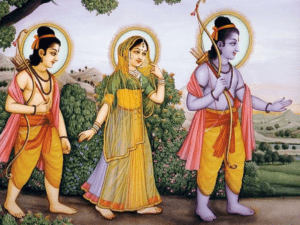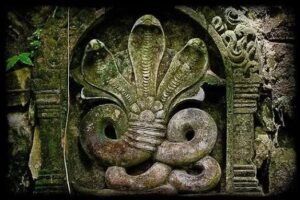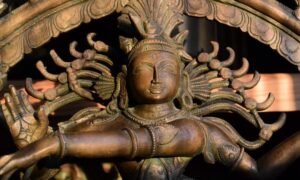Balarama: The Noble Brother and Champion of Justice
When we think of Hindu traditions, it is often Bhagwan Krishna who captivates our imaginations with his playful deeds, divine wisdom, and heroic feats. However, quietly standing alongside him in strength and simplicity is Balarama, also known as Sankarsana, the elder brother of Krishna. Revered as a deity of agriculture, strength, and duty, Balarama’s story is a tapestry of grandeur woven with profound moral lessons.
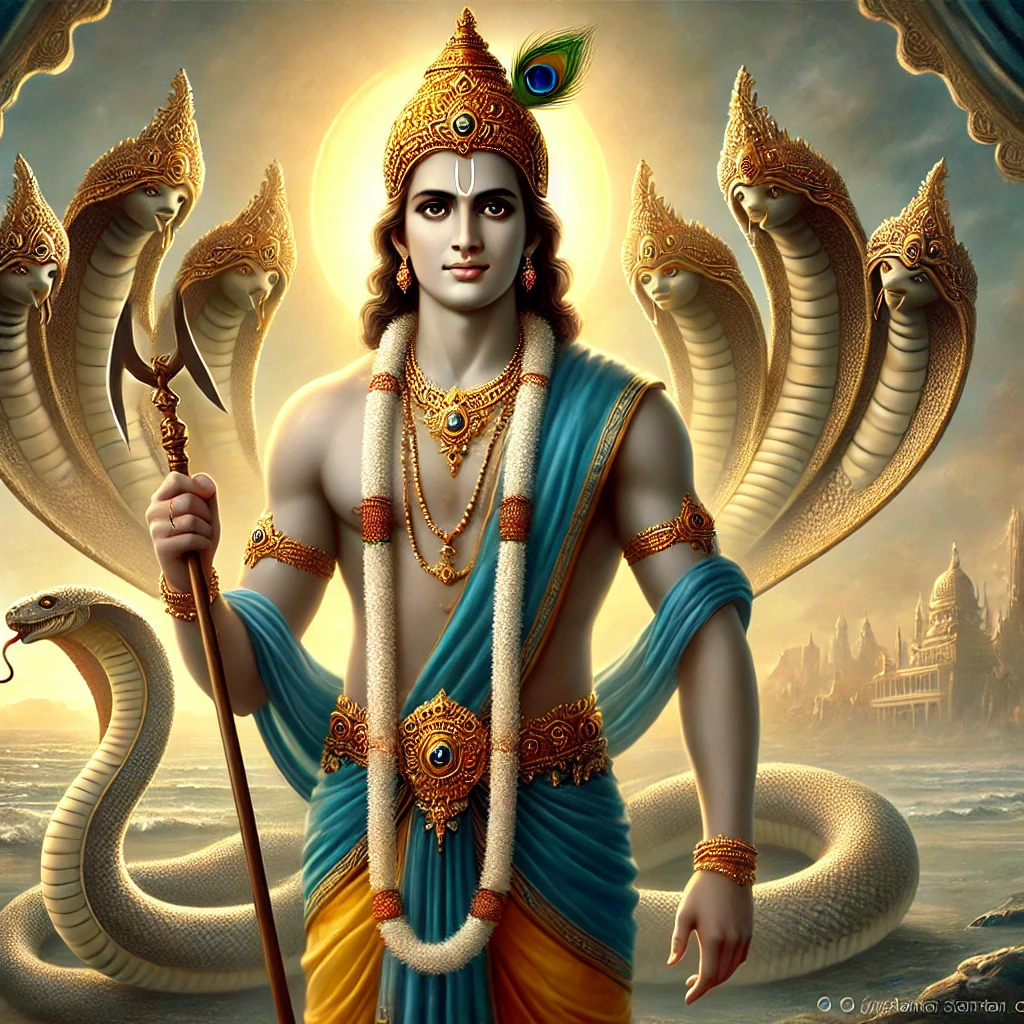
Who Is Balarama?
Balarama, also known as Balabhadra or Baladeva, embodies far more than just being Krishna’s older sibling. As Sankarsana, he signifies not only physical might but also the divine energy that binds the universe. The name Sankarsana is derived from the miraculous circumstances of his birth, as he was “extracted from another’s womb” when he was transferred from Devaki’s womb to that of Rohini, another wife of Vasudeva. Believed to be an incarnation of Shesha, the great serpent on which Lord Vishnu rests, Balarama’s divine connections are intricate and significant. Frequently depicted wielding a plow and a mace, Balarama represents both the agricultural backbone of society and the warrior’s strength to defend it.
Balarama’s role in mythology illustrates the ideal qualities of a brother and a protector, reinforcing the importance of family bonds and responsibility. His unwavering support for Krishna exemplifies loyalty, highlighting the virtues of companionship and sacrifice.
The Origin of the Name Balbhadra
The name Balbhadra combines two key elements: “Bala,” meaning strength, and “Bhadra,” meaning auspicious or noble. This name encapsulates Balarama’s dual nature of immense physical power and moral integrity. According to legends, the great sage Garga Muni, the family priest of the Yadavas, bestowed this name upon Balarama during his naming ceremony, recognizing his exceptional strength and noble character.

A Divine Birth with a Twist
Balarama’s birth, like that of his brother Krishna, is surrounded by miraculous circumstances. To shield him from the wrath of Kansa, the tyrannical king of Mathura, the unborn Balarama was transferred from Devaki’s womb to that of Rohini, another wife of Vasudeva. This divine intervention, orchestrated by Yogamaya, ensured Balarama’s safety, paving the way for his role as Krishna’s steadfast companion and protector. This miraculous transfer of birth reflects deeper themes of divine protection and the cosmic order, highlighting how the divine actively intervenes in human affairs to maintain balance.
Strength, Simplicity, and Duty
Balarama is often portrayed in stark contrast to the charming and unpredictable Krishna. He is the elder sibling who exemplifies duty, integrity, and steadfastness. While Krishna is known for his clever strategies and playful tactics, Balarama’s strength is straightforward and deeply rooted in his sense of justice. One of Balarama’s most recognizable symbols is his plow. As the protector of farmers and the deity of agriculture, Balarama’s profound connection to the earth is essential. His plow, representing the cultivator’s role, embodies his nurturing spirit and connection to nature, emphasizing the agricultural aspect significant in ancient agrarian societies.

Tales of Strength: The Protector and the Warrior
Balarama’s legendary strength is well-known. He is credited with defeating formidable demons such as Dhenukasura and Pralambasura, who threatened the innocent people of Vrindavan. His unmatched prowess in mace-fighting (gada-yuddha) and his teachings to significant figures in the Mahabharata, including Duryodhana and Bhima, highlight his martial expertise. Despite his immense strength, Balarama maintained his neutrality during the Kurukshetra War, reflecting his moral compass.
Yet, his sense of duty did not preclude him from emotion. When Yamuna, the river goddess, disobeyed his command, he forcefully redirected her with his plow, showcasing both his anger and mastery over nature. This incident reveals Balarama’s complexity as a deity who embodies both strength and compassion, demonstrating that even the mightiest can experience human emotions.
Discoveries Related to Balarama
Recent archaeological discoveries have shed light on Balarama’s historical and cultural significance. Excavations at various sites have unearthed terracotta figurines and seals depicting Balarama wielding his iconic plow and mace, emphasizing his role as an agricultural deity. Notable findings include:
- Gwalior, India: Artifacts have been found, including remnants of ancient temples dedicated to Balarama, showcasing unique architectural styles and inscriptions that mention his worship in local traditions.
- Karachi, Pakistan: Inscriptions referencing Balarama indicate his veneration in the region, reflecting the widespread reverence for him beyond the borders of India.
These discoveries underline the ancient worship of Balarama and his integral role in agrarian societies.
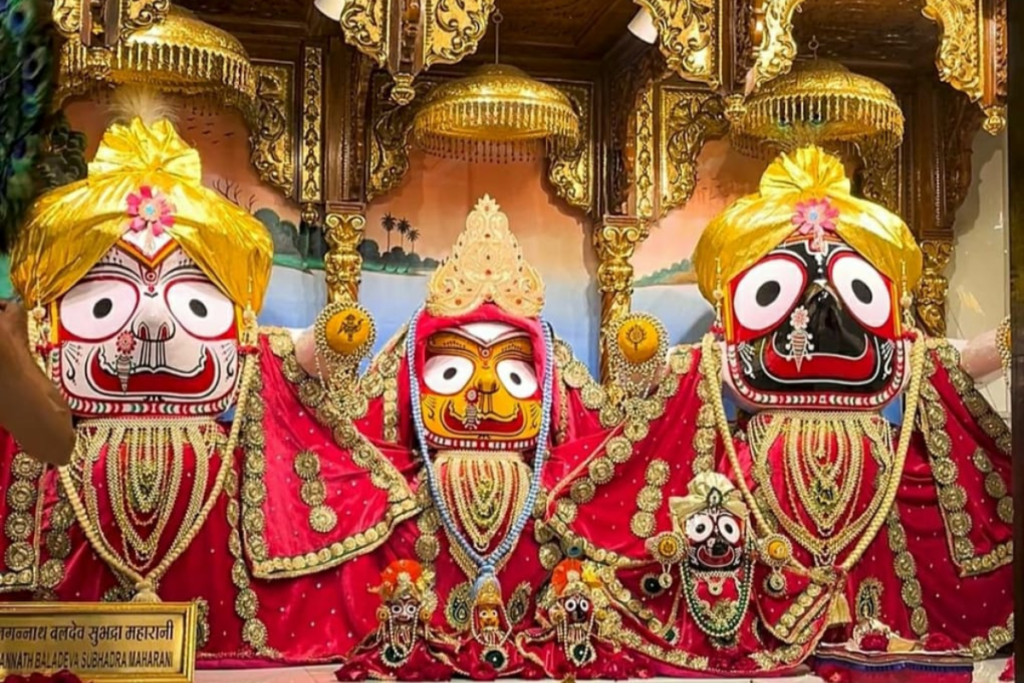
Balarama is worshiped in various temples across India, with significant reverence at the Jagannath Temple in Puri, Odisha. Here, he is honored as Balabhadra alongside Krishna (Jagannath) and Subhadra. The temple plays a vital role in the annual Rath Yatra, where the deities are paraded through the streets, symbolizing brotherhood and devotion.
In addition to the Jagannath Temple, Balarama is also celebrated at the Bhadraj Temple, where he is revered as a deity of strength and agriculture. His worship at both temples signifies the importance of strength tempered with righteousness in everyday life.
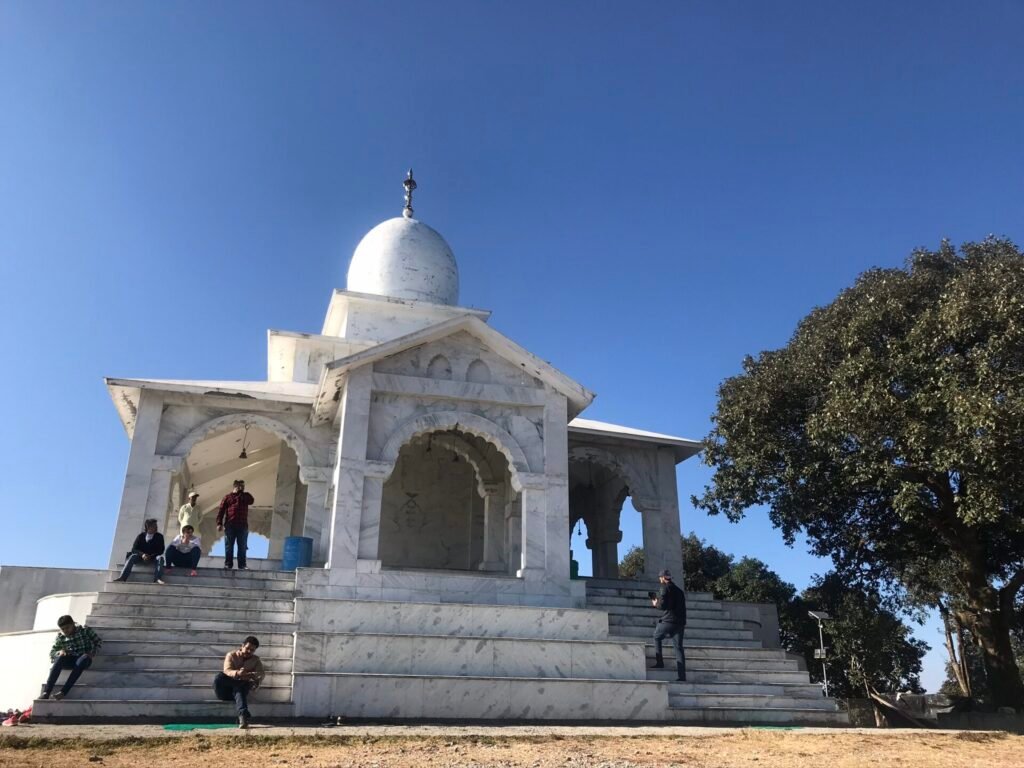
Balarama Jayanti
Hal Shashti is also celebrated as Balaram Jayanti. Balaram Ji was an elder brother of Lord Shri Krishna. This day is celebrated to commemorated the birth anniversary of Lord Balaram. This day is celebrated on the shashti Tithi or sixth day of Krishna Paksha in the month of Bhadrapada.
Role in the Mahabharata and Departure
Although Balarama did not actively engage in the Kurukshetra War, his influence was profound. As the teacher of both Duryodhana and Bhima, he had a vested interest in their fates. When Bhima struck Duryodhana below the waist in the final mace fight, violating the rules of combat, Balarama was furious and contemplated punishing Bhima. However, Krishna’s intervention calmed him, showcasing Balarama’s capacity for restraint and wisdom.
His neutrality during the war reflects a deep understanding of dharma—he chose not to involve himself in a conflict where both sides were flawed. This non-participation was not indifference but a testament to his belief in upholding righteousness. After the tragic demise of the Yadava dynasty, Balarama chose to withdraw from the world. In a serene act of meditation, he allowed a serpent to emerge from his body, symbolizing his return to his original form as Shesha, the serpent deity. This departure signifies the culmination of a life dedicated to cosmic order, duty, and strength.
Glorious Guardian of the Epic
In the grand narrative of Hindu mythology, Balarama may often stand in the shadow of his more famous younger brother, yet his role is equally vital. He is the protector of dharma, the guardian of the land, and the embodiment of strength imbued with wisdom. While Krishna enchanted the world with his divine lila (play), Balarama quietly upheld the moral order, ensuring that the world remained balanced.
As we delve deeper into the stories of Balarama, we discover a deity whose life offers profound lessons in duty, justice, and the power of simplicity.
Explore More with The Indosphere:
From ancient mythology to modern interpretations, join us as we uncover the captivating stories and lessons of India’s spiritual heritage.

